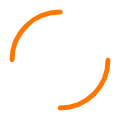Discharge management
Discharge management
Your patient has had a catheter implanted due to recurrent pleural effusion or ascites and is now ready to be discharged from your hospital. What to do now?
To ensure that your patient receives seamless care and receives training and drainage materials from us for drainage of effusions, we would like you to follow the following steps of our discharge management:
Filling out the discharge papers
Which information is important for us?
Please first clarify your patient’s home care situation. If this person is unable to drain himself or herself and does not have a caring relative or caregiver, please inform the social services department of your hospital.
Now, we would like you to fax us the following patient and health information 1 – 2 days before the patient is discharged. Use our Discharge Order form for this purpose. We also provide our sample discharge order to help you fill it out.
Please give the original discharge order to your patient upon discharge.
We need the following information:
- Name, first name of the patient
- Date of birth
- Full address
- Date of discharge
- Catheter location (for example, pleura left / right, ascites left / right, or multiple catheters).
- daily drainage volume (for example 400 ml/d)
- Special features (for example, infections, recommendations, etc.)
- Prescribed drainage material
- Phone numbers
- If your patient requires assistance with drainage or dressing changes from relatives, outpatient care services, inpatient care facilities, please also provide us with this data.
Finally, we need your contact information:
- Contact
- Phone number
- Implanting clinic (stamp)
- Prescribing physician (stamp and signature)
Training preparations at ewimed
We're up!
Your discharge form will be processed by ewimed. Our administration might call you with follow-up questions.
The information will be passed on to a member of our national training staff. The trainer will reach out to the patient to schedule a training session at home or in the care institution within a couple of days after the discharge. In this session, the patient and/or their caretaker will be trained in the use of the prescribed medical accessories.
Furthermore, we will use your discharge form to apply for coverage at the applicable health insurance company.
Hospital discharge
What happens on the day of the discharge?
- Please perform another complete drainage on the patient and renew the dressing.
- Remove all hose systems and close the safety valve with the protective cap provided.
1 | Disconnect connecting tube and catheter.

2 | Disinfect the valve opening with a cleaning cloth.

3 | Attach new protective cap.
When writing the physician’s letter, please note that the home drainage material is a prescription aid with a registration number.
We provide a corresponding suggestion for the wording in the physician’s letter in our information for the general practitioner .
Please give the physician’s letter to the patient at discharge together with the discharge order and the catheter passport .
For further questions please contact the staff of the company ewimed


